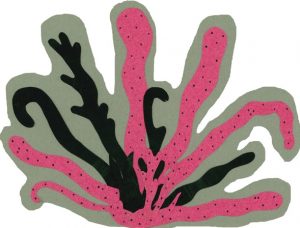
‘I’m down on my knees…’
by Tony Wilkes | May 10, 2018
By the roots of my hair some god got hold of me.
I sizzled in his blue volts like a desert prophet.
– Sylvia Plath, ‘The Hanging Man’, Ariel (1965)
Words are like people. They flake when you need them. ‘Pain words are lacking,’ Virginia Woolf wrote. ‘There should be cries, cracks, fissures…, flesh being gashed and blood spurting.’ The same can be said for love words. Those vampiric kissers, and ego killers that dance on the brain like cinders. Those black-out, burn, baby, burn hysterias and hissing geysers. All this that language cannot touch.
The Ancient Greeks had four words. One for friends, another for family, and a third for God. The fourth was éros: sexual passion. But Plato refined it. Éros transcends the flesh to the spirit, the beauty within. It brings us closer to the Divine.
I felt it in a club once. Sex had been swelling up the stairs, streaming onto street level. Girls rippled through the dark like tropical fish. The music beat you. Bruises bloomed up the walls. Words hovered in a haze. When you can my name it’s like a little prayer. And that’s when I saw him. His profile was thrown into relief, bathed in blue. My mind flew into orbit with that other Madonna:
just like a dream
‘Fuck.’
you are not what you seem
‘He’s gorgeous.’
you are a muse to me
‘Could this be it?
down on my knees
‘Is he ‘the one’?’
He wasn’t. He got with a girl. I was hit on by someone else. The night ended.
But I found his Facebook – a mashup of disposable photos of university ‘bohemians’, of beautiful Oxbridge brainboxes, of card games and booze, of vintage coats, fag ends, and smoke. He edits magazines at Cambridge. He writes and writes well. I showed friends. ‘He looks like you,’ they said. It was true. I was in love with a better version of myself.
The situation isn’t unique. Psychoanalysts have given it a name: projection. Freud got there first. He noticed that people deal with intolerable desires by projecting them onto the outside world. The example he gave was paranoia, the belief that everyone’s out to kill you. Since them, another psychoanalyst, Melanie Klein, has built upon Freud’s work and come up with the term ‘projective identification’. Reading Julien Green novel If I Were You (1949), Klein noticed the way in which people can project their entire selves onto another. This leads, she later argued, ‘to excessive idealisation of the object’, or, in plain English, thinking someone’s the bomb.
But ‘projection’ was first used in the modern sense long before, not by a psychoanalyst, but a writer. Translating Feuerbach’s The Essence of Christianity (1841), George Eliot found herself confronted with various foreign terms. Vegegenständlichung, she knew, meant ‘objectification’. But ‘God is the objectification of man’s ideal qualities’ didn’t work. So instead she chose to use the word ‘projection’. She then used it again for Selbstentaüsserung – the notion that God exists by ‘projecting the self outwards.’ She cried into her work. God, it seemed, no longer created us. We created him. Her faith was broken.
Love as projection, then, brings us closer to God. Certainly, the Anglo-Saxons regarded God’s love for mankind as a kind of éros. Casting Christ in the role of lover, they produced a whole body of writing later labelled ‘Wooing Prayers.’ One poem, ‘The Wooing of our Lord’, reads:
Jesus, sweet Jesus, you fought for me against the foes of my soul:
…and made me, a wretch, your lover and spouse.
(ll. 382-4)
[W]hen I look upon you who hang [crucified] beside me your great sweetness ravishes me greatly from pain.
(ll. 406-8)
This wasn’t limited to the 13th century. The Renaissance sculptor Bernini depicted religious passion as a kind of sexual ecstasy in his work The Ecstasy of Saint Teresa (1652). The sculpture is based on an episode in Teresa’s autobiography. Describing an angel appearing to her, she seems to have tried her hand at some 16th century religious erotica:
I saw in his hand a long spear of gold, and at the iron’s point there seemed to be a little fire. He appeared to me to be thrusting it…into my heart, and to pierce my very entrails; when he drew it out, he seemed…to leave me all on fire with a great love of God. The pain was so great that it made me moan…The soul is satisfied now with nothing less than God.
The marble sculpture is true to the text. The angel hangs above the nun, who is collapsing in a swoon. Her habit cascades to the floor in voluptuous folds. Her head is thrown back to meet the angel’s. But it’s her face that’s the most daring. With her eyelids closing, her lips part in a moan. As one critic puts it, the sculpture is ‘orgiastic’. Contact with God is climactic, in every sense of the word.
But this connection isn’t just a product of a historical period, or even a specific culture. As society has become more secular, the link between sexual passion and religion remains unbroken. Just listen to disco. The famous 1975 hit ‘You Sexy Thing’ features the line ‘I believe in miracles’ but the verse:
Where did you come from angel?
How did you know I’d be the one?
Did you know you’re everything I prayed for?
Did you know, every night and day for?
And the lyrics of Cher’s ‘Take Me Home’ (1979) could well have been said by Teresa:
One night with you
Lyin’ here next to me
[…]
It would be ecstasy
Ooh I’m in heaven (heaven)
Seems like heaven (heaven)
So much in heaven (heaven)
We’ve always needed someone in whom we can invest our desires and hopes. We may know it’s a delusion, a projection. But we seek communion. This is what love, art and religion are at heart. They’re all yearnings for connection. Even if I could, I’ve got no desire to meet this guy. He doesn’t exist, not as the person I’ve created anyway. He would fall to earth, broken. So he’ll remain supreme. We all need our gods.
Artwork by: Kate Haselden




